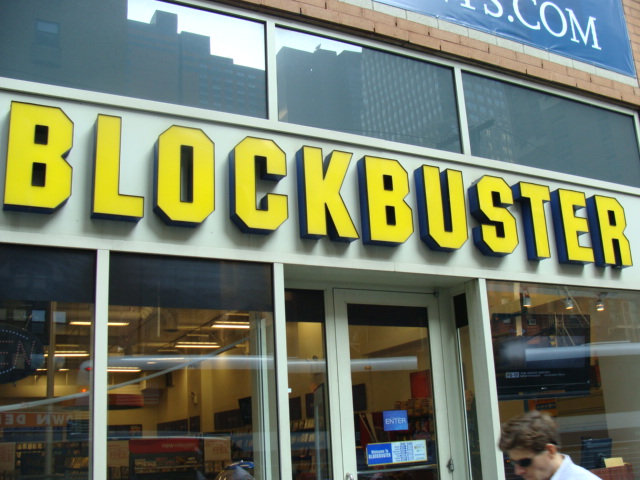Posts Tagged ‘Success’
When It’s Time to Defy Gravity
 If you pull hard on your team, what will they do? Will they rebel? Will they push back? Will they disagree? Will they debate? And after all that, will they pull with you? Will the pull for three weeks straight? Will they pull with their whole selves? How do you feel about that?
If you pull hard on your team, what will they do? Will they rebel? Will they push back? Will they disagree? Will they debate? And after all that, will they pull with you? Will the pull for three weeks straight? Will they pull with their whole selves? How do you feel about that?
If you pull hard on your peers, what will they do? Will they engage? Will they even listen? Will they dismiss? And if they dismiss, will you persist? Will you pull harder? And when you pull harder, do they think more of you? And when you pull harder still, do they think even more of you? Do you know what they’ll do? And how do you feel about that?
If you push hard on your leadership, what will they do? Will they ‘lllisten or dismiss? And if they dismiss, will you push harder? When you push like hell, do they like that or do they become uncomfortable, what will you do? Will they dislike it and they become comfortable and thankful you pushed? Whatever they feel, that’s on them. Do you believe that? If not, how do you feel about that?
When you say something heretical, does your team cheer or pelt you with fruit? Do they hang their heads or do they hope you do it again? Whatever they do, they’ve watched your behavior for several years and will influence their actions.
When you openly disagree with the company line, do your peers cringe or ask why you disagree? Do they dismiss your position or do they engage in a discussion? Do they want this from you? Do they expect this from you? Do they hope you’ll disagree when you think it’s time? Whatever they do, will you persist? And how do you feel about that?
When you object to the new strategy, does your leadership listen? Or do they un-invite you to the next strategy session? And if they do, do you show up anyway? Or do they think you’re trying to sharpen the strategy? Do they think you want the best for the company? Do they know you’re objecting because everyone else in the room is afraid to? What they think of your dissent doesn’t matter. What matters is your principled behavior over the last decade.
If there’s a fire, does your team hope you’ll run toward the flames? Or, do they know you will?
If there’s a huge problem that everyone is afraid to talk about, do your peers expect you get right to the heart of it? Or, do they hope you will? Or, do they know you will?
If it’s time to defy gravity, do they know you’re the person to call?
And how do you feel about that?
Image credit – The Western Sky
Learn to Recognize Waiting
If you want to do a task, but you don’t have what you need, that’s waiting for a support resource. If you need a tool, but you don’t have it, you wait for a tool. If you need someone to do the task, but you don’t have anyone, you wait for people. If you need some information to make a decision, but you don’t have it, you wait for information.
If a tool is expensive, usually you have to wait for it. The thinking goes like this – the tool is expensive, so let’s share the cost over too many projects and too many teams. Sure, less work will get done, but when we run the numbers, the tool will look less expensive because it’s used by many people. If you see a long line of people (waiting) or a signup list (people waiting at their desks), what they are waiting for is usually an expensive tool or resource. In that way, to find the cause of waiting, stand at the front of the line and look around. What you see is the cause of the waiting.
If the tool isn’t expensive, buy another one and reduce the waiting. If the tool is expensive, calculate the cost of delay. Cost of delay is commonly used with product development projects. If the project is delayed by a month, the incremental revenue from the product launch is also delayed by a month. That incremental revenue is the cost of delaying the project by a month. When the cost of delay is larger than the cost of an expensive tool, it makes sense to buy another expensive tool. But, to purchase that expensive tool requires multiple levels of approvals. So, the waiting caused by the tool results in waiting for approval for the new tool. I guess there’s a cost of delay for the approval process, but let’s not go there.
Most companies have more projects than people, and that’s why projects wait. And when projects wait, projects are late. Adding people is like getting another expensive tool. They are spread over too many projects, and too little gets done. And like with expensive tools, getting more people doesn’t come easy. New hires can be justified (more waiting in the approval queue), but that takes time to find them, hire them, and train them. Hiring temporary people is a good option, though that can seem too expensive (higher hourly rate), it requires approval, and it takes time to train them. Moving people from one project to another is often the best way because it’s quick and the training requirement is less. But, when one project gains a person, another project loses one. And that’s often the rub.
When it’s time to make an important decision and the team has to wait for missing information, the project waits. And when projects wait, projects are late. It’s difficult to see the waiting caused by missing or uncommunicated information, but it can be done. The easiest to see when the information itself is a project deliverable. If a milestone review requires a formal presentation of the information, the review cannot be held without it. The delay of the milestone review (waiting) is objective evidence of missing information.
Information-based waiting is relatively easy to see when the missing information violates a precedent for decision making. For example, if the decision is always made with a defined set of data or information, and that information is missing, the precedent is violated and everyone knows the decision cannot be made. In this case, everyone’s clear why the decision cannot be made, everyone’s clear on what information is missing, and everyone’s clear on who dropped the ball.
It’s most difficult to recognize information-based waiting when the decision is new or different and requires judgment because there’s no requirement for the data and there’s no precedent to fall back on. If the information was formally requested and linked to the decision, it’s clear the information is missing and the decision will be delayed. But if it’s a new situation and there’s no agreement on what information is required for the decision, it’s almost impossible to discern if the information is missing. In this situation, it comes down to trust in the decision-maker. If you trust the decision-maker and they say there’s information missing, then there’s information missing. If you trust the decision-maker and they say there’s no information missing, they should make the decision. But if you don’t trust the decision-maker, then all bets are off.
In general, waiting is bad. And it’s helpful if you can recognize when projects are waiting. Waiting is especially bad went the delayed task is on the critical path because when the project is waiting on a task that’s on the critical path, there’s a day-for-day slip in the completion date. Hint: it’s important to know which tasks and decisions are on the critical path.
Image credit — Tomasz Baranowski
Strategy, Tactics, and Action
When it comes to strategy and tactics, there are a lot of definitions, a lot of disagreement, and a whole lot of confusion. When is it strategy? When is it tactics? Which is more important? How do they inform each other?
Instead of definitions and disagreement, I want to start with agreement. Everyone agrees that both strategy AND tactics are required. If you have one without the other, it’s just not the same. It’s like with shoes and socks: Without shoes, your feet get wet; without socks, you get blisters; and when you have both, things go a lot better. Strategy and tactics work best when they’re done together.
The objective of strategy and tactics is to help everyone take the right action. Done well, everyone from the board room to the trenches knows how to take action. In that way, here are some questions to ask to help decide if your strategy and tactics are actionable.
What will we do? This gets to the heart of it. You’ve got to be able to make a list of things that will get done. Real things. Real actions. Don’t be fooled by babble like “We will provide customer value” and “Will grow the company by X%.” Providing customer value may be a good idea, but it’s not actionable. And growing the company by an arbitrary percentage is aspirational, but not actionable.
Why will we do it? This one helps people know what’s powering the work and helps them judge whether their actions are in line with that forcing function. Here’s a powerful answer: Competitors now have products and services that are better than ours, and we can’t have that. This answer conveys the importance of the work and helps everyone put the right amount of energy into their actions. [Note: this question can be asked before the first one.]
Who will do it? Here’s a rule: if no one is freed up to do the new work, the new work won’t get done. Make a list of the teams that will stop their existing projects before they can take action on the new work. Make a list of the new positions that are in the budget to support the strategy and tactics. Make a list of the new companies you’ll partner with. Make a list of all the incremental funding that has been put in the budget to help all the new people complete all these new actions. If your lists are short or you can make any, you don’t have what it takes to get the work done. You don’t have a strategy and you don’t have tactics. You have an unfunded mandate. Run away.
When will it be done? All actions must have completion dates. The dates will be set without consideration of the work content, so they’ll be wrong. Even still, you should have them. And once you have the dates, double all the task durations and push out the dates in your mind. No need to change the schedule now (you can’t change it anyway) because it will get updated when the work doesn’t get done on time. Now, using your lists of incremental headcount and budget, assign the incremental resources to all the actions with completion dates. Look for actions and budgets as those are objective evidence of the unfunded mandate character of your strategy and tactics. And for actions without completion dates, disregard them because they can never be late.
How will we know it’s done? All actions must call out a definition of success (DOS) that defines when the action has been accomplished. Without a measurable DOS, no one is sure when they’re done so they’ll keep working until you stop them. And you don’t want that. You want them to know when they’re done so they can quickly move on to the next action without oversight. If there’s no time to create a DOS, the action isn’t all that important and neither is the completion date.
When the wheels fall off, and they will, how will we update the strategy and tactics? Strategy and tactics are forward-looking and looking forward is rife with uncertainty. You’ll be wrong. What actions will you take to see if everything is going as planned? What actions will you take when progress doesn’t meet the plan? What actions will you take when you learn your tactics aren’t working and your strategy needs a band-aid? What will you do? Who will do it? When will it be done? And how will you know it’s done?
Image credit: Eric Minbiole
What it Takes to Do New Work
What it takes to do new work.
Confidence to get it wrong and confidence to do it early and often.
Purposeful misuse of worst practices in a way that makes them the right practices.
Tolerance for not knowing what to do next and tolerance for those uncomfortable with that.
Certainty that they’ll ask for a hard completion date and certainty you won’t hit it.
Knowledge that the context is different and knowledge that everyone still wants to behave like it’s not.
Disdain for best practices.
Discomfort with success because it creates discomfort when it’s time for new work.
Certainty you’ll miss the mark and certainty you’ll laugh about it next week.
Trust in others’ bias to do what worked last time and trust that it’s a recipe for disaster.
Belief that successful business models have half-lives and belief that no one else does.
Trust that others will think nothing will come of the work and trust that they’re likely right.
Image credit — japanexpertna.se
28 Things I Learned the Hard Way
- If you want to have an IoT (Internet of Things) program, you’ve got to connect your products.
- If you want to build trust, give without getting.
- If you need someone with experience in manufacturing automation, hire a pro.
- If the engineering team wants to spend a year playing with a new technology, before the bell rings for recess ask them what solution they’ll provide and then go ask customers how much they’ll pay and how many they’ll buy.
- If you don’t have the resources, you don’t have a project.
- If you know how it will turn out, let someone else do it.
- If you want to make a friend, help them.
- If your products are not connected, you may think you have an IoT program, but you have something else.
- If you don’t have trust, you have just what you earned.
- If you hire a pro in manufacturing automation, listen to them.
- If Marketing has an optimistic sales forecast for the yet-to-be-launched product, go ask customers how much they’ll pay and how many they’ll buy.
- If you don’t have a project manager, you don’t have a project.
- If you know how it will turn out, teach someone else how to do it.
- If a friend needs help, help them.
- If you want to connect your products at a rate faster than you sell them, connect the products you’ve already sold.
- If you haven’t started building trust, you started too late.
- If you want to pull in the delivery date for your new manufacturing automation, instead, tell your customers you’ve pushed out the launch date.
- If the VP knows it’s a great idea, go ask customers how much they’ll pay and how many they’ll buy.
- If you can’t commercialize, you don’t have a project.
- If you know how it will turn out, do something else.
- If a friend asks you twice for help, drop what you’re doing and help them immediately.
- If you can’t figure out how to make money with IoT, it’s because you’re focusing on how to make money at the expense of delivering value to customers.
- If you don’t have trust, you don’t have much
- If you don’t like extreme lead times and exorbitant capital costs, manufacturing automation is not for you.
- If the management team doesn’t like the idea, go ask customers how much they’ll pay and how many they’ll buy.
- If you’re not willing to finish a project, you shouldn’t be willing to start.
- If you know how it will turn out, it’s not innovation.
- If you see a friend that needs help, help them ask you for help.
Image credit — openDemocracy
Two Questions to Grow Your Business
 Two important questions to help you grow your business:
Two important questions to help you grow your business:
- Is the problem worth solving?
- When do you want to learn it’s not worth solving?
No one in your company can tell you if the problem is worth solving, not even the CEO. Only the customer can tell you if the problem is worth solving. If potential customers don’t think they have the problem you want to solve, they won’t pay you if you solve it. And if potential customers do have the problem but it’s not that important, they won’t pay you enough to make your solution profitable.
A problem is worth solving only when customers are willing to pay more than the cost of your solution.
Solving a problem requires a good team and the time and money to run the project. Project teams can be large and projects can run for months or years. And projects require budgets to buy the necessary supplies, tools, and infrastructure. In short, solving problems is expensive business.
It’s pretty clear that it’s far more profitable to learn a problem is not worth solving BEFORE incurring the expense to solve it. But, that’s not what we do. In a ready-fire-aim way, we solve the problem of our choosing and try to sell the solution.
If there’s one thing to learn, it’s how to verify the customer is willing to pay for your solution before incurring the cost to create it.
Image credit — Milos Milosevic
The Five Hardships of Success
 Everything has a half-life, but we don’t behave that way. Especially when it comes to success. The thinking goes – if it was successful last time, it will be successful next time. So, do it again. And again. It’s an efficient strategy – the heavy resources to bring it to life have already been spent. And it’s predictable – the same customers, the same value proposition, the same supply base, the same distribution channel, and the same technology. And it’s dangerous.
Everything has a half-life, but we don’t behave that way. Especially when it comes to success. The thinking goes – if it was successful last time, it will be successful next time. So, do it again. And again. It’s an efficient strategy – the heavy resources to bring it to life have already been spent. And it’s predictable – the same customers, the same value proposition, the same supply base, the same distribution channel, and the same technology. And it’s dangerous.
Success is successful right up until it isn’t. It will go away. But it will take time. A successful product line won’t fall off the face of the earth overnight. It will deliver profits year-over-year and your company will come to expect them. And your company will get hooked on the lifestyle enabled by those profits. And because of the addiction, when they start to drop off the company will do whatever it takes to convince itself all is well. No need to change. If anything, it’s time to double-down on the successful formula.
Here’s a rule: When your successful recipe no longer brings success, it’s not time to double-down.
Success’s decline will be slow, so you have time. But creating a new recipe takes a long time, so it’s time to declare that the decline has already started. And it’s time to learn how to start work on the new recipe.
Hardship 1 – Allocate resources differently. The whole company wants to spend resources on the same old recipes, even when told not to. It’s time to create a funding stream that’s independent of the normal yearly planning cycle. Simply put, the people at the top have to reallocate a part of the operating budget to projects that will create the next successful platform.
Hardship 2 – Work differently. The company is used to polishing the old products and they don’t know how to create new ones. You need to hire someone who can partner with outside companies (likely startups), build internal teams with a healthy disrespect for previous success, create mechanisms to support those teams and teach them how to work in domains of high uncertainty.
Hardship 3 – See value differently. How do you provide value today? How will you provide value when you can’t do it that way? What is your business model? Are you sure that’s your business model? Which elements of your business model are immature? Are you sure? What is the next logical evolution of how you go about your business? Hire someone to help you answer those questions and create projects to bring the solutions to life.
Hardship 4 – Measure differently. When there’s no customer, no technology and no product, there’s no revenue. You’ve got to learn how to measure the value of the work (and the progress) with something other than revenue. Good luck with that.
Hardship 5 – Compensate differently. People that create something from nothing want different compensation than people that do continuous improvement. And you want to move quickly, violate the status quo, push through constraints and create whole new markets. Figure out the compensation schemes that give them what they want and helps them deliver what you want.
This work is hard, but it’s not impossible. But your company doesn’t have all the pieces to make it happen. Don’t be afraid to look outside your company for help and partnership.
Image credit — Insider Monkey
All-or-Nothing vs. One-in-a-Row
 All-or-nothing thinking is exciting – we’ll launch a whole new product family all at once and take the market by storm! But it’s also dangerous – if we have one small hiccup, “all” turns into “nothing” in a heartbeat. When you take an all-or-nothing approach, it’s likely you’ll have far too little “all” and far too much “nothing”.
All-or-nothing thinking is exciting – we’ll launch a whole new product family all at once and take the market by storm! But it’s also dangerous – if we have one small hiccup, “all” turns into “nothing” in a heartbeat. When you take an all-or-nothing approach, it’s likely you’ll have far too little “all” and far too much “nothing”.
Instead of trying to realize the perfection of “all”, it’s far better to turn nothing into something. Here’s the math for an all-or-nothing launch of product family launch consisting of four products, where each product will create $1 million in revenue and the probability of launching each product is 0.5 (or 50%).
1 product x $1 million x 0.5 = $500K
2 products x $1 million x 0.5 x 0.5 = $500K
3 products x $1 million x 0.5 x 0.5 x 0.5 = $375K
4 products x $1 million x 0.5 x 0.5 x 0.5 x 0.5 = $250K
In the all-or-nothing scheme, the launch of each product is contingent on all the others. And if the probability of each launch is 0.5, the launch of the whole product family is like a chain of four links, where each link has a 50% chance of breaking. When a single link of a chain breaks, there’s no chain. And it’s the same with an all-or-nothing launch – if a single product isn’t ready for launch, there are no product launches.
But the math is worse than that. Assume there’s new technology in all the products and there are five new failure modes that must be overcome. With all-or-nothing, if a single failure mode of a single product is a problem, there are no launches.
But the math is even more deadly than that. If there are four use models (customer segments that use the product differently) and only one of those use models creates a problem with one of the twenty failure modes (five failure modes times four products) there can be no launches. In that way, if 25% of the customers have one problem with a single failure mode, there are can be no launches. Taken to an extreme, if one customer has one problem with one product, there can be no launches.
The problem with all-or-nothing is there’s no partial credit – you either launch four products or you launch none. Instead of all-or-nothing, think “secure the launch”. What must we do to secure the launch of a single product? And once that one’s launched, the money starts to flow. And once we launch the first one, what must we do to secure the launch the second? (More money flows.) And, once we launch the third one…. you get the picture. Don’t try to launch four at once, launch a single product four times in a row. Instead of all-or-nothing, think one-in-a-row, where revenue is achieved after each launch of a single launch.
And there’s another benefit to launching one at a time. The second launch is informed by learning from the first launch. And the third is informed by the first two. With one-in-a-row, the team gets smarter and each launch gets better.
Where all-or-nothing is glamorous, one-in-a-row is achievable. Where all-or-nothing is exciting, one-in-row is achievable. And where all-or-nothing is highly improbable, one-in-a-row is highly profitable.
Image credit – Mel
Companies, Acquisitions, Startups, and Hurricanes
If you run a company, the most important thing you can control is how you allocate your resources. You can’t control how the people in your company will respond to input, but you can choose the projects they work on. You can’t control which features and functions your customers will like, but you can choose which features and functions become part of the next product. And you can’t control if a new technology will work, but you can choose the design space to investigate. The open question – How to choose in a way that increases your probability of success?
If you want to buy a company, the most important thing you can control is how you allocate your resources. In this case, the resources are your hard-earned money and your choice is which company to buy. The open question – How to choose in a way that increases your probability of success?
If you want to invest in a startup company, the most important thing you can control is how you allocate your resources. This case is the same as the previous one – your money is the resource and the company you choose defines how you allocate your resources. This one is a little different in that the uncertainty is greater, but so is the potential reward. Again, the same open question – How to choose in a way that increases your probability of success?
Taking a step back, the three scenarios can be generalized into a category called a “system.” And the question becomes – how to understand the system in a way that improves resource allocation and increases your probability of success?
These people systems aren’t predictable in an if-A-then-B way. But they do have personalities or dispositions. They’ve got characteristics similar to hurricanes. A hurricane’s exact path cannot be forecasted, the meteorologist can use history and environmental conditions to broadly define regions where the probability of danger is higher. The meteorologist continually monitors the current state of the hurricane (the system as it is) and tracks its position over time to get an idea of its trajectory (a system’s momentum). The key to understanding where the hurricane could go next: where it is right now (current state), how it got there (how it has behaved over time), and how have other hurricanes tracked under similar conditions (its disposition). And it’s the same for systems.
To improve your understanding of how your system may respond, understand it as it is. Define the elements and how those elements interact. Then, work backward in time to understand previous generations of the system. Which elements were improved? Which ones were added? Then, like the meteorologist, start at the system’s genesis and move forward to the present to understand its path. Use the knowledge of its path and the knowledge of systems (it’s important to be the one that improves the immature elements of the system and systems follow S-curves until the S-curve flattens) to broadly define regions where the probability of success is higher.
These methods won’t guarantee success. But, they will help you choose projects, choose acquisitions, choose technologies, and choose startups in a way that increases your probability of success.
Image credit — Alexander Gerst
When Best Practice Withers Into Old Practice
When best practices get old, they turn into ruts of old practice. No, it doesn’t make sense to keep doing it this way, but we’ve done it this way in the past, we’ve been successful, and we’re going to do it like we did last time. You can misuse old practices long after they’ve withered into decrepit practices, but, ultimately, your best practices will turn into old practices and run out of gas. And then what?
It’s unskillful to wait until the wheels fall off before demonstrating a new practice – a new practice is a practice that you’ve not done before – but that’s what we mostly do. There’s immense pressure to do what we did last time because we know how it turned out last time. But when the environment around a process changes, there’s no guarantee that the output of the old process will adequately address the changing environment. What worked last time will work next time, until it doesn’t.
But there’s another reason why we don’t try new practices. We’ve never taught people how to do it. Here are some thoughts on how to try new practices.
- If you think the work can be done a better way, try a new practice, then decide if it was better. If the new practice was better, do it that way until you come up with an even better practice. Rinse and repeat.
- Don’t ask, just try the new practice.
- When you try a new practice, do it in a way that is safe to fail. (Thanks to Dave Snowden for that language.) Like before you use a new cleaning product to remove a stain on your best sweater, test the new practice in a way that won’t ruin your sweater.
- If someone asks you to use the old practice instead of trying the new practice, ask them to do it the old way and you do it the new way.
- If that someone is your boss, tell them you’re happy to do WHAT they want but you want to be the one that decides HOW to do it.
- If your boss still wants you to follow the old practice, do it the old way, do it the new way, and look for a new job because your boss isn’t worth working for.
Just because best practices were best last time, doesn’t mean they’re good practice this time.
Image credit – Dustin Moore
Now that you know your product is bad for the environment, what will you do?
 If your products were bad for the environment, what would you do?
If your products were bad for the environment, what would you do?
If your best products were the worst for the environment, what would you do?
If you knew your products hurt the people that use them, what would you do?
If you knew your sales would be reduced if you told your customers that your products were bad for their health, what would you do?
If you knew a competitive technology was fundamentally less harmful to the environment, what would you do?
If you knew that competitive technology did not hurt the people that use it, what would you do?
If you knew that competitive technology was taking market share from you, what would you do?
If you knew that competitive technology was improving faster than yours, what would you do?
If you knew how to redesign your product to make it better for the environment, but that redesign would reduce the product’s performance in other areas, what would you do?
If that same redesign effort generated patented technology, what would you do?
So, what will you do?
Image credit — Shane Gorski






 Mike Shipulski
Mike Shipulski